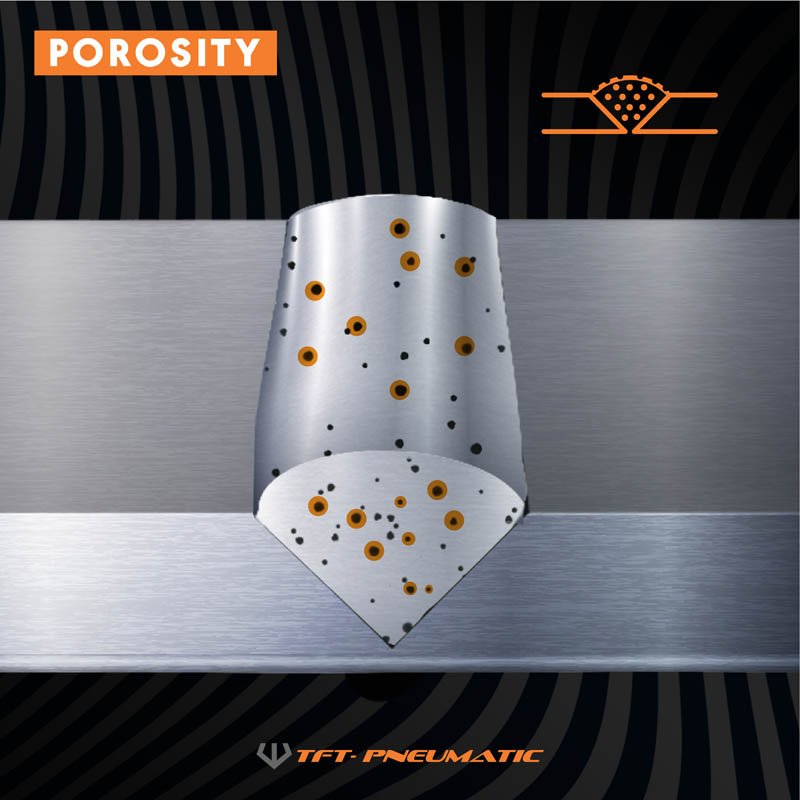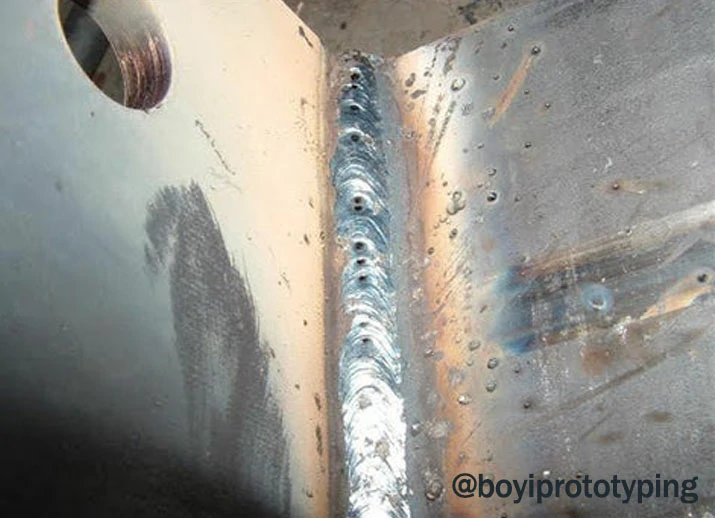What is Porosity in Welding: Usual Sources and Efficient Remedies
Wiki Article
Porosity in Welding: Identifying Common Issues and Implementing Finest Practices for Prevention
Porosity in welding is a pervasive issue that frequently goes undetected up until it creates substantial issues with the integrity of welds. This usual issue can endanger the stamina and sturdiness of welded frameworks, posing safety and security risks and causing pricey rework. By understanding the source of porosity and implementing effective prevention methods, welders can significantly improve the high quality and integrity of their welds. In this conversation, we will certainly explore the essential aspects adding to porosity development, analyze its destructive effects on weld performance, and talk about the very best methods that can be taken on to decrease porosity event in welding procedures.Typical Sources Of Porosity

Another regular culprit behind porosity is the presence of contaminants on the surface of the base metal, such as oil, grease, or rust. When these contaminants are not successfully eliminated before welding, they can vaporize and end up being trapped in the weld, causing problems. Using unclean or wet filler materials can introduce pollutants into the weld, adding to porosity problems. To mitigate these common reasons of porosity, detailed cleaning of base metals, appropriate shielding gas choice, and adherence to optimum welding criteria are necessary practices in attaining high-grade, porosity-free welds.
Effect of Porosity on Weld Top Quality

The existence of porosity in welding can substantially compromise the architectural stability and mechanical properties of welded joints. Porosity creates spaces within the weld metal, compromising its general toughness and load-bearing ability.
Welds with high porosity degrees tend to display reduced effect toughness and reduced capacity to warp plastically prior to fracturing. Porosity can restrain the weld's capability to effectively transmit forces, leading to early weld failure and prospective safety dangers in critical frameworks.
Best Practices for Porosity Avoidance
To improve the architectural integrity and top quality of bonded joints, what specific procedures can be executed to decrease the occurrence of porosity during the welding process? Using the proper welding technique for the particular material being bonded, linked here such as readjusting the welding angle and weapon position, can additionally protect against porosity. Normal evaluation of welds and instant removal of any type of concerns identified throughout the welding process are crucial methods to avoid porosity and generate top quality welds.Relevance of Appropriate Welding Methods
Applying proper welding strategies is critical in making sure the architectural honesty and top quality of welded joints, building upon the foundation of reliable porosity avoidance measures. Welding methods directly affect the total toughness and sturdiness of the welded structure. One key aspect of proper welding strategies is keeping the proper warm input. Too much warm can bring about raised porosity due to the entrapment of gases in the weld pool. Conversely, not enough warm might cause incomplete fusion, developing potential weak factors in the joint. In addition, utilizing the proper welding criteria, such as voltage, existing, and take a trip rate, is vital for accomplishing sound welds with marginal porosity.Moreover, the selection of welding procedure, whether it be MIG, TIG, or stick welding, ought to line up with the particular needs of the task to guarantee optimum results. Correct cleansing and preparation of the base steel, along with picking the right filler material, are also necessary parts of proficient welding methods. By sticking to these finest practices, welders can decrease the risk of porosity development and create premium, structurally sound welds.

Examining and Quality Assurance Measures
Checking treatments are essential to find and protect against porosity in welding, making certain the toughness and durability of the final item. Non-destructive screening approaches such as ultrasonic screening, radiographic testing, and visual assessment are commonly utilized to recognize possible problems like try this site porosity.Performing pre-weld and post-weld examinations is also crucial in maintaining high quality control requirements. Pre-weld examinations entail verifying the materials, devices setups, and sanitation of the workplace to stop contamination. Post-weld evaluations, on the various other hand, evaluate the last weld for any type of issues, including porosity, and confirm that it meets specified requirements. Executing a comprehensive quality assurance plan that includes comprehensive screening treatments and evaluations is vital to lowering porosity more tips here problems and guaranteeing the overall top quality of bonded joints.
Final Thought
To conclude, porosity in welding can be a common concern that affects the high quality of welds. By identifying the typical root causes of porosity and executing finest practices for prevention, such as appropriate welding methods and testing steps, welders can make certain high top quality and trusted welds. It is necessary to focus on prevention approaches to lessen the event of porosity and preserve the honesty of welded frameworks.Report this wiki page